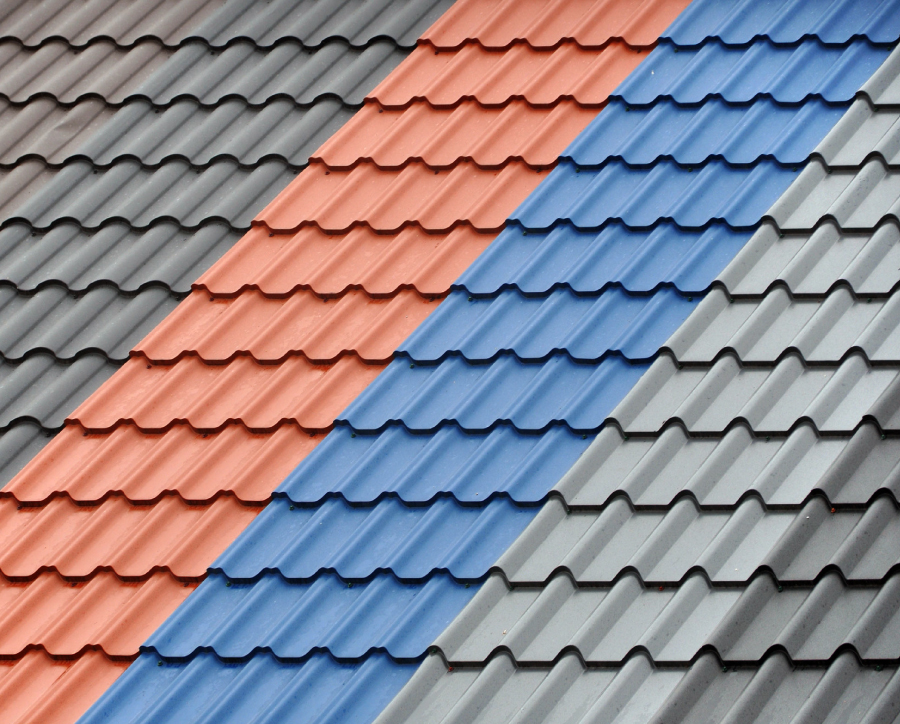
Advantages of coloured roofs
July 29th, 2023
Category: All Blogs, Roofing Solutions
Introduction:
When it comes to home design and construction, the roof plays a vital role in protecting the house and enhancing its overall aesthetic appeal. While traditional roof colors like black, brown, and grey have long been the norm, there is a growing trend toward colored roofs. Colored roofs offer numerous advantages that go beyond visual appeal. In this blog, we will explore the advantages of colored roofs and why they are becoming increasingly popular.
1. Enhanced Curb Appeal:
One of the most obvious advantages of colored roofs is the boost they provide to a home’s curb appeal. A colored roof adds character and uniqueness to the overall appearance of a house. By selecting a color that complements the architectural style and surroundings, homeowners can create a visually stunning and cohesive exterior.
2. Increased Energy Efficiency:
Colored roofs can contribute to improved energy efficiency within a home. Light-colored or reflective roof coatings can reflect a significant amount of solar heat, reducing the amount of heat transferred into the living spaces below. This, in turn, reduces the need for excessive air conditioning, leading to lower energy bills and a reduced carbon footprint.
3. Temperature Regulation:
Different colors have varying heat absorption and retention properties. Dark-colored roofs absorb and retain more heat, making them ideal for colder climates where passive heating is desired. On the other hand, lighter-colored roofs reflect sunlight and help keep the interior cooler in hot climates. By selecting the right color for the roof based on the local climate, homeowners can achieve better temperature regulation and indoor comfort.
4. Longevity and Durability:
Colored roofs are often coated with advanced materials that enhance their durability. These coatings provide protection against UV rays, extreme weather conditions, and other external factors that can degrade the roof over time. With proper maintenance, colored roofs can have a longer lifespan compared to traditional roofs, reducing the need for frequent repairs or replacements.
5. Environmental Benefits:
Colored roofs can have positive environmental impacts. Reflective roof coatings help mitigate the urban heat island effect, where cities become significantly warmer due to the concentration of heat-absorbing surfaces. By reflecting sunlight back into the atmosphere, colored roofs can contribute to a cooler urban environment and reduce the demand for energy-intensive cooling systems.
6. Design Flexibility:
Colored roofs offer homeowners a wide range of design possibilities. With an array of colors and finishes available, individuals can choose a roof that matches their personal style and preferences. Whether it’s a vibrant red, a calming blue, or a rustic earth tone, colored roofs provide the opportunity to make a bold statement or blend harmoniously with the surroundings.
7. Increased Property Value:
Investing in a colored roof can have a positive impact on the value of a property. As colored roofs become more popular, they can differentiate a house in the real estate market. Potential buyers are often drawn to homes with unique features, and a well-designed colored roof can make a lasting impression and potentially increase the perceived value of the property.
Conclusion:
Colored roofs offer a plethora of advantages beyond mere aesthetics. They enhance curb appeal, increase energy efficiency, regulate temperature, and provide durability and longevity. Moreover, they contribute to environmental sustainability and offer design flexibility. With their ability to transform the overall look of a home while providing practical benefits, colored roofs have become a popular choice for homeowners looking to create a unique and efficient living space.
Leave a Comment
